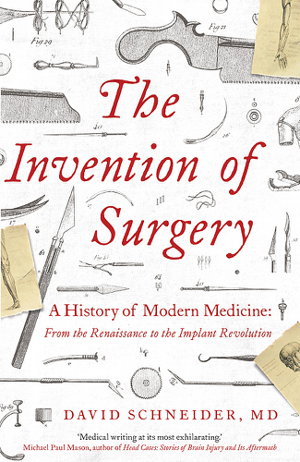| Sat | 9am – 5pm |
| Sun | 10am – 5pm |
| Mon | 9am – 5:30pm |
| Tue | 9am – 5:30pm |
| Wed | 9am – 5:30pm |
| Thu | 9am – 5:30pm |
| Fri | 9am – 7pm |
Ask our staff anything about our shop or products, or share your feedback.

PublishedHodder & Stoughton, August 2021 |
ISBN9781529362268 |
FormatSoftcover, 400 pages |
Dimensions19.6cm × 12.6cm × 2.8cm |
"Bold and compelling... Uniformly excellent, and often wryly amusing."" - The Wall Street Journal "A globetrotting historical adventure, told from the inside of the operating room... Medical writing at its most exhilarating." - Michael Paul Mason "Comprehensively researched, deftly told, and radiating both intellect and passion...
Essential reading for anyone interested not only in the history but also in the future of medicine." - Frank Huyler "A history of surgery that is informative, entertaining, and highly readable." Library Journal A fascinating history of the practice of surgery from one of the leading figures in the field, chronicling centuries of scientific breakthroughs by the discipline's most dynamic, pioneering doctors. Written by an author with plenty of experience holding a scalpel, Dr. David Schneider's The Invention of Surgery is an in-depth biography of the practice that has leapt forward over the centuries from the dangerous guesswork of ancient Greek physicians through the world-changing "implant revolution" of the twentieth century. The Invention of Surgery explains this dramatic progress and highlights the personalities of the discipline's most dynamic historical figures. It links together the lives of the pioneering scientists who first understood what causes disease, how organs become infected or cancerous, and how surgery could powerfully intercede in people's lives, and then shows how the rise of surgery intersected with many of the greatest medical breakthroughs of the last century, including the evolution of medical education, the transformation of the hospital from a place of dying to a habitation of healing, the development of antibiotics, and the rise of transistors and polymer science. And as Schneider argues, surgery has not finished transforming; new technologies are constantly reinventing both the practice of surgery and the nature of the objects we are permanently implanting in our bodies. Schneider considers these latest developments, asking "What's next?" and analyzing how our conception of surgery has changed alongside our evolving ideas of medicine, technology, and our bodies.

